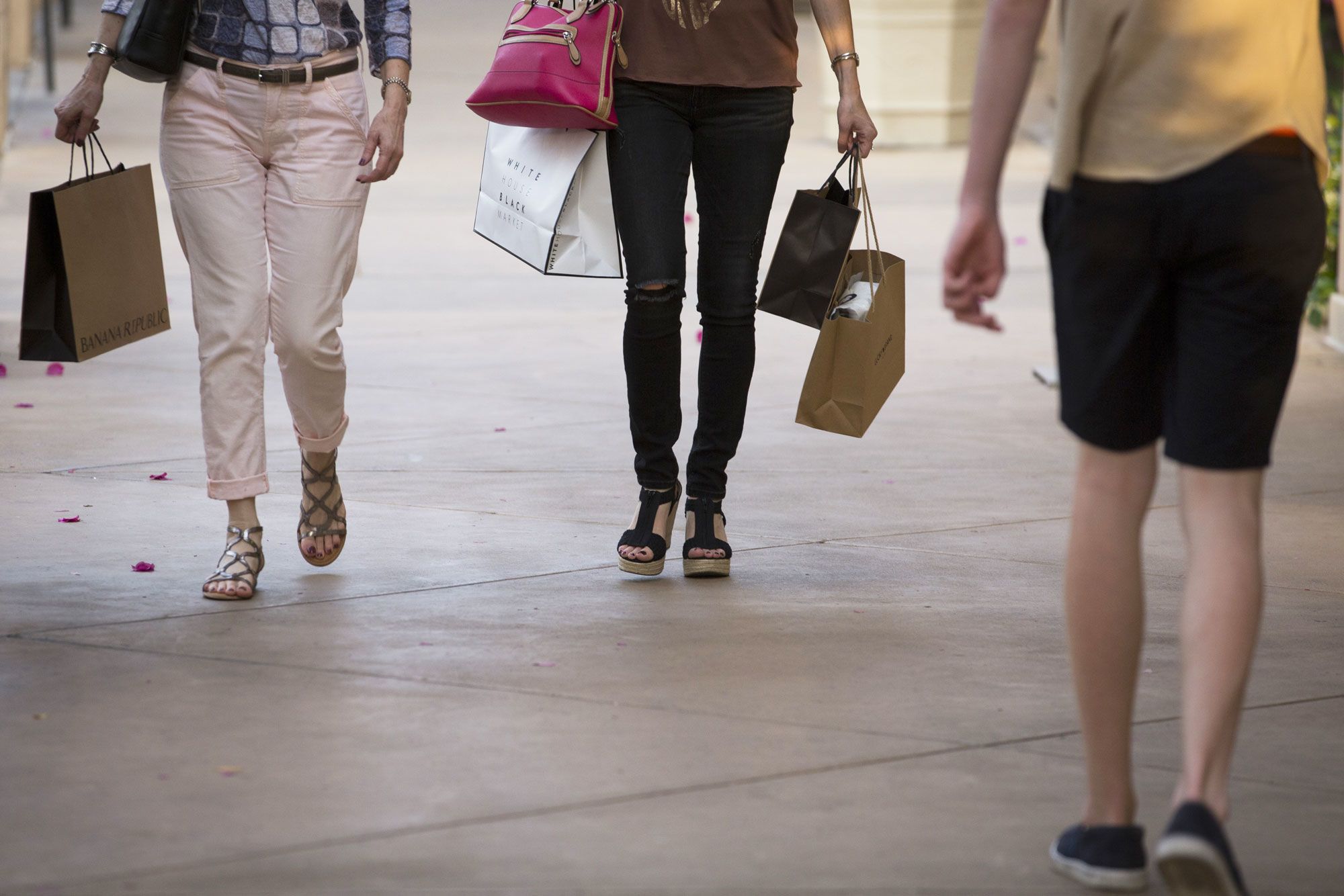Shoppers carry bags while walking through the Scottsdale Quarter shopping mall in Scottsdale, Arizona.
Caitlin Ohara | Bloomberg | Getty Images
U.S. consumer spending and prices rose moderately in June, pointing to slower economic growth and benign inflation that could see the Federal Reserve cutting interest rates on Wednesday for the first time in a decade.
The Commerce Department said on Tuesday consumer spending, which accounts for more than two-thirds of U.S. economic activity, gained 0.3% as an increase in services and outlays on other goods offset a decline in purchases of motor vehicles.
Data for May was revised up to show consumer spending rising 0.5% instead of the previously reported 0.4% advance. Economists polled by Reuters had forecast consumer spending climbing 0.3% last month. The data was included in last Friday’s second-quarter gross domestic product report, which showed consumer spending increased at a 4.3% annualized rate, accelerating from a tepid 1.1% pace in the January-March period.
Robust consumer spending blunted some of the hit to GDP from weak exports, business investment and a slowdown in inventory accumulation. The economy grew at a 2.1% rate last quarter, pulling back from the first quarter’s brisk 3.1% pace.
Consumer prices as measured by the personal consumption expenditures (PCE) price index edged up 0.1% in June as food and energy prices fell. The PCE price index gained 0.1% in May. In the 12 months through June, the PCE price index rose 1.4% after a similar increase in May.
Excluding the volatile food and energy components, the PCE price index rose 0.2% last month, increasing by the same margin for a third straight month. That lifted the annual increase in the so-called core PCE price index to 1.6% from 1.5% in May. The core PCE index is the Fed’s preferred inflation measure and has undershot the U.S. central bank’s 2% target this year. Fed officials were due to start a two-day policy meeting on Tuesday against the backdrop of slowing economic growth. The economy, which is slowing as the stimulus from last year’s $1.5 trillion tax cut package fades, is facing headwinds from trade tensions and weak global growth.
When adjusted for inflation, consumer spending gained 0.2% in June. This so-called real consumer spending rose 0.3% in May. Last month’s small gain in core consumer spending likely sets up consumption for a step-down in the third quarter after the robust growth recorded in the April-June period.
Last month, spending on goods rose 0.3%. Spending on services also rose 0.3%.
Consumer spending in June was supported by a 0.4% rise in personal income, which followed a similar increase in May. Wages increased 0.5%. Savings shot up to $1.34 trillion from $1.31 trillion in May.
Join to ourTrading at home group


 Signal2forex.com - Best Forex robots and signals
Signal2forex.com - Best Forex robots and signals




